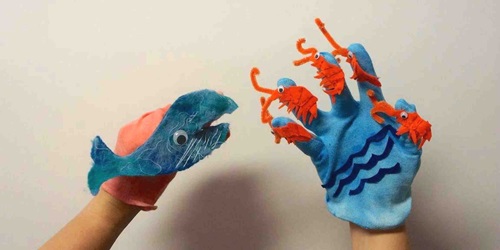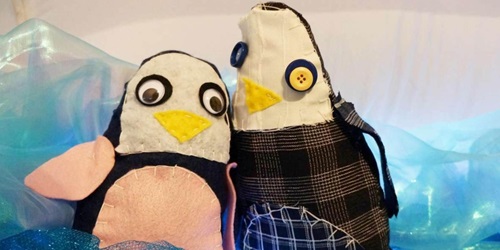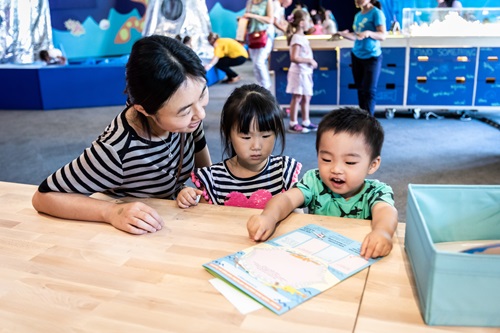Art-making with ice is a great way to explore the properties of water and can be an excellent sensory activity for early learners.
As a bonus, these paints are edible if your little ones are into eating the materials (no guarantees on how long the food colouring will stain their snout and paws though).
Suitable for ages: 2 years and up
Time required: 15-30 mins (plus freezing time)
Difficulty: 2 out of 5
Related Exhibition: Elysium Arctic
Uh-Oh a cave
a narrow gloomy cave
and what’s that?!
one shiny wet nose
two big furry ears
two big googly eyes
IT’S A POLAR BEAR!
Whether you are taking an imaginative play journey inspired by going on a bear hunt or exploring the beauty and scientific wonders of the polar north in greater depth, polar bears are a sure place to start.
Polar bears (scientific name Ursus maritimus - Maritime Bear) are the apex predators in the arctic, which means they hunt other animals but no other animals hunt them. So they are first to be impacted by the terrible effects of disappearing sea ice in this region. Polar bears depend on sea ice for hunting, travelling and breeding. They live on a diet of almost pure fat (their favourite food is seal blubber) but have a special anti-junk food gene of sorts that helps them to process amounts of fat that would be deadly to other animals. They can weigh up to 700kg and swim over 300km away from land. They are rather spectacular creatures!
For this art activity we are taking inspiration from these arctic wonders - polar bears and their icy polar environment - using frozen water as our painting medium.
How to make ice cube polar bear paintings

- Ice cube tray (or some small plastic or silicon food containers)
- Water
- Food colouring (we would normally use powdered edico food dyes for their brilliant colours but food colouring from the supermarket also works)
- Watercolour paper (200-300gsm) cut out to the shape of a polar bear
- Some pop sticks
- Aprons
To Make:
Step 1.
Add the colourings you wish to use to your water and stir to combine. Pour the coloured water into the trays.

You may want to pour a few clear water ones alongside for contrast and experimentation. Pop them in the freezer.

Step 2.
After about 20 mins when the ice is beginning to form but not yet solid, put some pop sticks into your ice cube tray. This way you will have a handle on each of your painting blocks when they freeze.

Step 3.
Once frozen remove from freezer. If you have a white or light coloured crayon you might like to draw some resist patterns onto your polar bear.

Step 4.
Paint your polar bear with the ice cube paints.

Remember that light and dark colours will mix and become muddy so it can be nice to just use blue/green/red or orange/red/yellow tones together at once on the page rather than mixing them all at once.

Step 5.
Put your painted polar bears aside on a flat surface to dry.

And there you have your painted polar bear!

We’d love to see your creations!
Please send us photos either by email to: web@sea.museum or tag us on Instagram - just tag the photo with our username @sea.museum
You might also enjoy...



